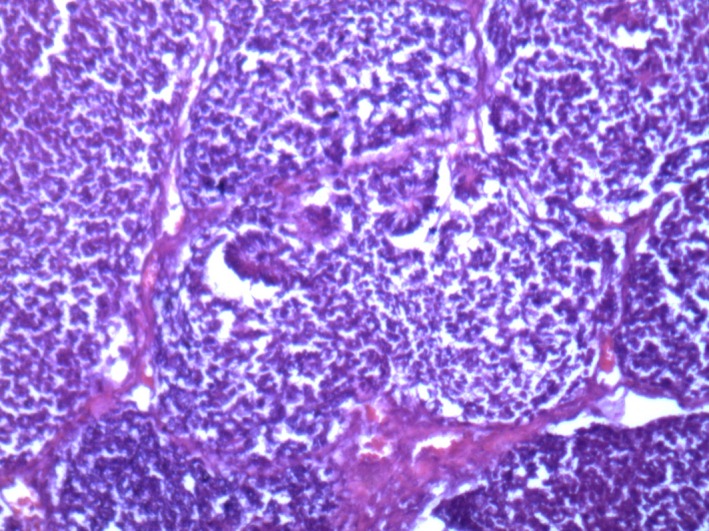Key Clinical Message
There are different primitive tribal treatment ways in the Sub‐Saharan Africa. WHO must try more to educate these communities to abandon such harmful treatment ways.
Keywords: Abdominal pain, Africa, tribal treatment, tumor
A 2.5‐year‐old girl was admitted to the hospital with complaints of vomiting, constipation, and abdominal pain for the last 10 months. She was the eighth child of her mother. She did not have any other known disease. She had no family history. Physical examination revealed a palpable, solid and semi‐mobile mass filling the whole abdomen. There were also many symmetrical incision scars on the anterior abdominal skin (Fig. 1). No rebound and defans were found on physical examination. Abdominal computer tomography revealed a huge solid‐cystic mass that originated from the upper pole of the left kidney (Fig. 2). The tumor and the left kidney were resected by laparotomy (Fig. 3). Pathology revealed neuroblastoma (Fig. 4). In Darfur region, cutting the abdominal skin of children who have continuous abdominal pain had still been a tribal treatment approach. This procedure is done by local tribal midwives. This is a primitive approach and patients might have medical treatment delays because of such primitive treatment ways. World Health Organization (WHO) must try to educate the tribal communities against this harmful primitive approach.
Figure 1.

View of incision scars anterior Abdominal skin.
Figure 2.

Abdominal computer tomographic image.
Figure 3.

View of abdominal mass after laparotomy.
Figure 4.

Histopathological appearance of Neuroblastoma (H&E × 10).
Conflict of Interest
None declared.


